Montana’s Irish Renaissance
They say a culture isn’t a culture without its language, and if that’s truly the case, Montana’s Irish culture must have lay dormant for well over a century and a half. Lucky for me the language came back. For, after all, I doubt I’d be standing here, alone, on this clear, brisk April afternoon.
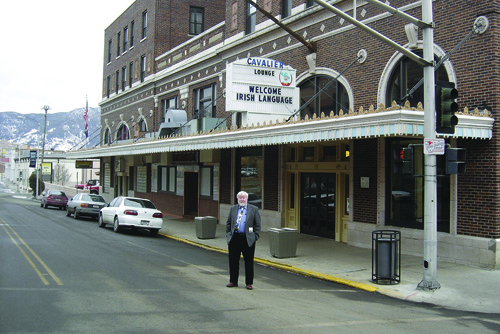
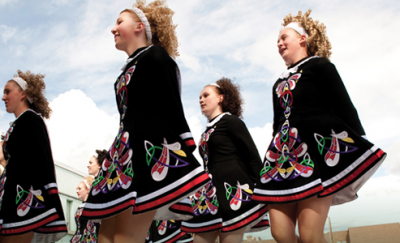
“Here” is where my family settled. A patch of Montana landscape where the luminous white outline of the Canton Church appears against the freshly powdered Big Belt Mountains. In my 50 years, with all but a handful spent outside of Montana, this was my first visit to this isolated place where the bodies of my great-great-grandparents, Michael and Honora Sullivan, lay buried. They migrated to Boston from Ireland in 1844, and by 1865 they’d homesteaded here in the once-lakeless Canton Valley on the banks of the Missouri River. Buried with them—I imagine in a romantic sort of way—was our ancient Irish (Gaelic) language. Over time, it was hidden only in the idioms and sayings we habitually utter in our distinctly-Montana-ish dialect. Thank God it resurfaced. A part of me imagines it rose up from the souls of our pioneering ancestors, but the “real” story of its return goes something like this...
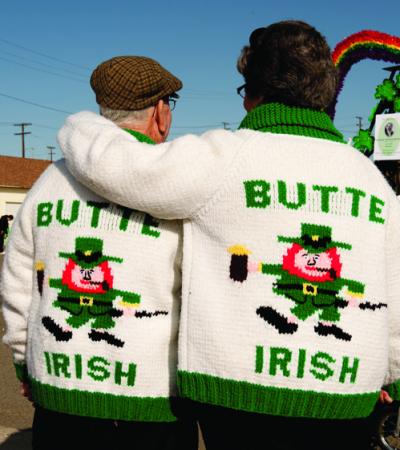
The Montana Irish Renaissance originated from the converging of two ingredients. The first was the stock material—Montana’s large population of Irish descendants—and the second was the seasoning that came in the form of a trio of outsiders with strange names—Liam Ó Cuinneagáin, Barra Ó Donnabháin, and Traolach Ó Riordain. In October of 1996, I was sitting with my friend Richard Newman at the Old Post Pub in Missoula, where across from us sat a lively, gray-haired and slightly portly Irishman from Donegal named Liam Ó Cuinneagáin. While in Ireland the prior summer, I’d stumbled upon Liam’s school, Oideas Gael, in the tiny coastal village of Gleann Cholm Cille. Upon my return to Missoula, I emailed him, seeking his advice on how to bring the language to Montana, and within weeks, he was here teaching at our inaugural Irish-language Immersion Weekend. Liam is best described as an Irish-language evangelist; indeed, he is a champion for language revival worldwide. As it turns out, Montana is a special and mythical place for the Irish. Found within the pages of one of the more famous Irish-language texts—Rotha Mór an tSaoil, the Irish-speaking Indiana Jones, Micí Mac Gabhann, wrote of his Odyssey-like journey through Montana on his way to the Yukon in the mid-1800s. Generations of Irish schoolchildren read his book. I see Liam as the modern-day Micí; he is “the one” who brought the language back to Montana.
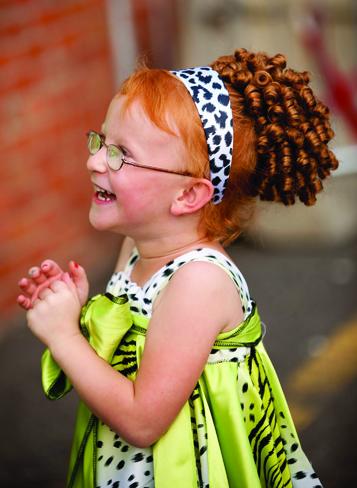
Following Liam’s visit, the Montana Gaelic Cultural Society (MGCS) was created, and its membership sponsored an ever-increasing number of Irish-language immersion events. The society also created the An Rí Rá (Irish Festival) and contributed its name and financial support to the burgeoning pub-session scene and a variety of Irish-related activities. The demand for language events resulted in a need for more teachers. As a result, a collaboration with Daltaí na Gaeilge (Teachers of Irish)—based in New York City—brought Irish-language instructors from the East Coast and elsewhere to see and experience the mythical Wild West of Micí Mac Gabhann’s Montana. One of these language “pioneers” was Barra Ó Donnabháin, a soon-to-be pivotal “character” in the creation and proliferation of the Montana Gaeltacht (Irish-speaking region).
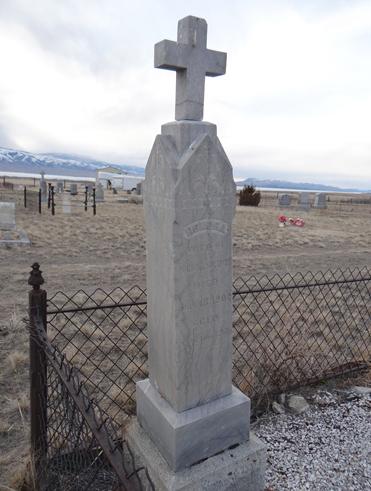
While sharing a snifter of Jamison with Barra following an immersion event in Missoula in 1999, he tearfully confessed to me that Montana felt like home to him. The people. The landscape. He’d never experienced this in his lifetime; it was immediate, powerful, and lasting. Barra immigrated to New York City from Cork in the 1960s. Possessing a genius-level IQ, he was an Irish-language linguist and storyteller with a hold-your-stomach sense of humor. His innate ability to keep his listening audience in tears, whether joyful or sad, surely played a role in his convincing the editor of the Irish Echo, “the” Irish newspaper in New York, that an Irish-language column was paramount to the success of the paper. So enamored with Montana, Barra even published an article on Montana’s Irish language revival in the Echo. More important, he convinced a part-time construction worker, doctoral scholar in Irish language and history, and fluent Irish-speaker named Traolach Ó Riordain, to move to Missoula in 2001 to teach language on a permanent basis.
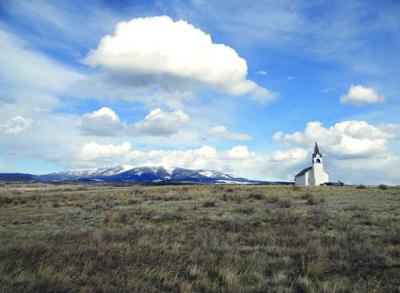
Sitting amongst stacks of Irish history and language books, half-eaten pastries and yet-to-be-graded papers, I visited with Traolach recently in his office at the University of Montana (UM) where we reminisced about his tenure here in Missoula. Sadly, Barra died of cancer in 2005, much too soon for him to witness the results of Traolach’s work in Montana. Temporally bookended on the one end by his arrival here and on the other by the recent success of the Irish Studies program at UM, Traolach’s endless energy and engaging personality convinced a number of Irish-Montanans to support and help grow the movement. From the visit of then-President of Ireland Mary McAleese to Missoula in 2006 for the purpose of christening the newly formed program, to the formation of the organization Friends of Irish Studies, Traolach continues to be at the epicenter of the Montana Irish Renaissance. He reminded me that Montana is a special place for the Irish in Ireland, so much so that even Irish schoolchildren believe that the Treasure State exists just over the mountains of west Cork. “That’s how much Montana means to the Irish,” he states emphatically.
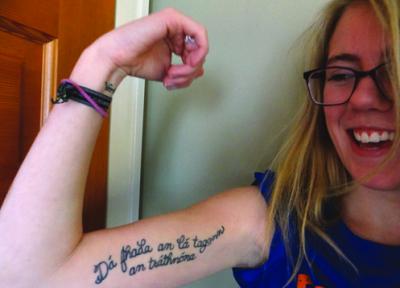
Some say that the worldwide interest in all-things-Irish is a fad; rather, it was a direct consequence of the popular Riverdance production in the 1990s. For me, and speaking for a number of others with Irish heritage, the rejuvenation of my Irishness was fueled by my interest in the language. I’d never lost my Irish soul; rather, I just needed to get off the couch. While standing here at the graveyard with stunning views of Canyon Ferry Lake and the Big Belts, I could just as easily visualize myself at the cemetery outside my ancestral home of Eyeries Village on the Beara, with Coulagh Bay to my front and the Kerry Mountains to my rear. No wonder Barra felt at home here in Montana. The mountains. The people. The only thing missing was the language. But that certainly isn’t the case now—is it?
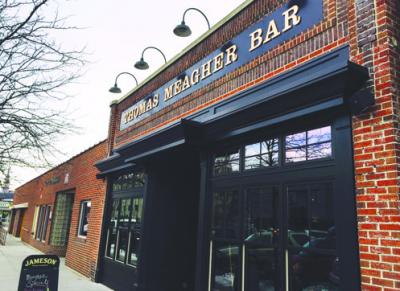
While Irish is spoken today in special districts (the Gaeltacht) in Ireland, it disappeared from the conversations of North American immigrants shortly after their arrival.Daniel Cassidy, author of How the Irish Invented Slang, reasons that the language is hidden in our English slang. Galore (go leor), shanty (seantigh), swell (sóúil), shindig (seinnt-theach), lollygag (leath-luighe géag), and dude (dúd) are some examples that came out of the urban slum scene of the 19th century.
If you visit the Web site of Daltaí na Gaeilge (www.daltai.com/phrases), you can learn to speak a number of Irish phrases and expressions, including: Dia Duit (Hello) and Slán go foil! (Goodbye for now!). When making a toast—Sláinte! (Health!), or when celebrating the quintessential Irish-American holiday— Lá Fhéile Pádraig Sona Duit! or Beannachtaí na Féile Pádraig oraibh! (Happy St. Patrick’s Day!).
Erin go Bragh...Dúd! – Ireland forever...Dude!
MAIN IRISH FESTIVALS IN MONTANA:
Flathead Celtic Festival: February 6, 2015 www.flatheadcelticfestival.com
Irish Language Immersion Weekend in Butte: April 17-19 www.mtgaelic.org/Immersion.html
Celtic Festival Missoula July 25, 2015 www.celticfestivalmissoula.com
An Ri Ra - Montana Irish Festival in ButteAugust 14-16, 2015 www.mtgaelic.org
Irish Studies at the University of Montana www.cas.umt.edu/irishstudies/default.cfm
Related article in the Archive, see http://www.distinctlymontana.com/blogs/getting-my-irish by Kathleen Clary Miller.
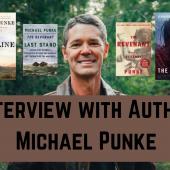

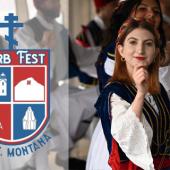
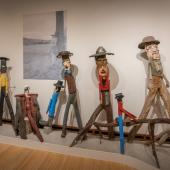

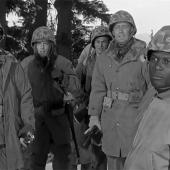
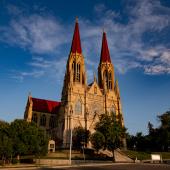
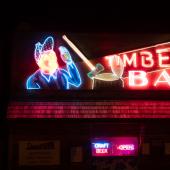
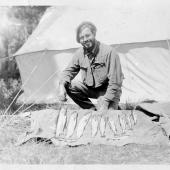

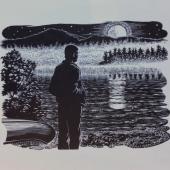
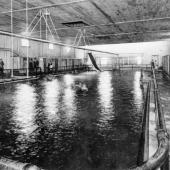
Leave a Comment Here